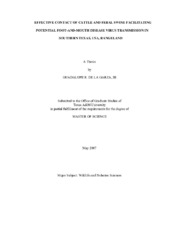| dc.description.abstract | For the second study, a web-based survey was developed and distributed to all
members of four major health education organizations. A total of 1,925 HEs’ completed
the survey and 1,607 responses were utilized in the final analysis. This study indicated
that participants had deficient knowledge and unfavorable attitudes toward the CDCproposed
genomic competencies.
In the third study, a theoretical model was developed to predict HEs’ likelihood to
incorporate genomic competencies into their practice. Using techniques from Structural
Equation Modeling (SEM), the model was tested with the same data of the second study.
Findings supported the proposed theoretical model. While genomic knowledge,
attitudes, and self-efficacy were significantly associated with HEs’ likelihood to
incorporate genomic competencies into their practice, attitudes was the strongest
predictor of likelihood.
In summary, these studies indicated that participating HEs had deficient genomic
knowledge, unfavorable attitudes toward a set of CDC-proposed genomic competencies,
and low likelihood to adopt genomic competencies into health promotion. Relevant
training should be developed and advocated. As the SEM analysis results indicated the
survey findings supported the proposed theoretical model, which can be utilized to steer
future training for HEs. statistics, 2) unadjusted inferential statistics, 3) stratified analysis, and 4) multivariable
models.
My investigation produced results in accord with generally accepted notions in
addition to significant findings that interestingly counter current preconceptions. Intraspecies
contact was more common than inter-species, with indirect contact occurring
more frequently than direct. Direct contact between species occurred extremely rarely.
The most important factors that influenced the rate of contact for both species were
water, winter, and cultivated fields.
Information regarding probability of infectious agent survival and transfer will be
used in the future to advance current epidemiological models, including geographicautomata
(Ward et al. 2007: In Press) and cellular automata models (Doran and Laffan
2005) to better understand and manage integrated domestic cattle and free-ranging
wildlife populations. Such modeling provides essential and necessary knowledge for
developing prevention, detection, response, and recovery strategies – employed in
advance, during, and after a disease outbreak, respectively. | en |


